2023’s Best Science Books For Kids
25:48 minutes
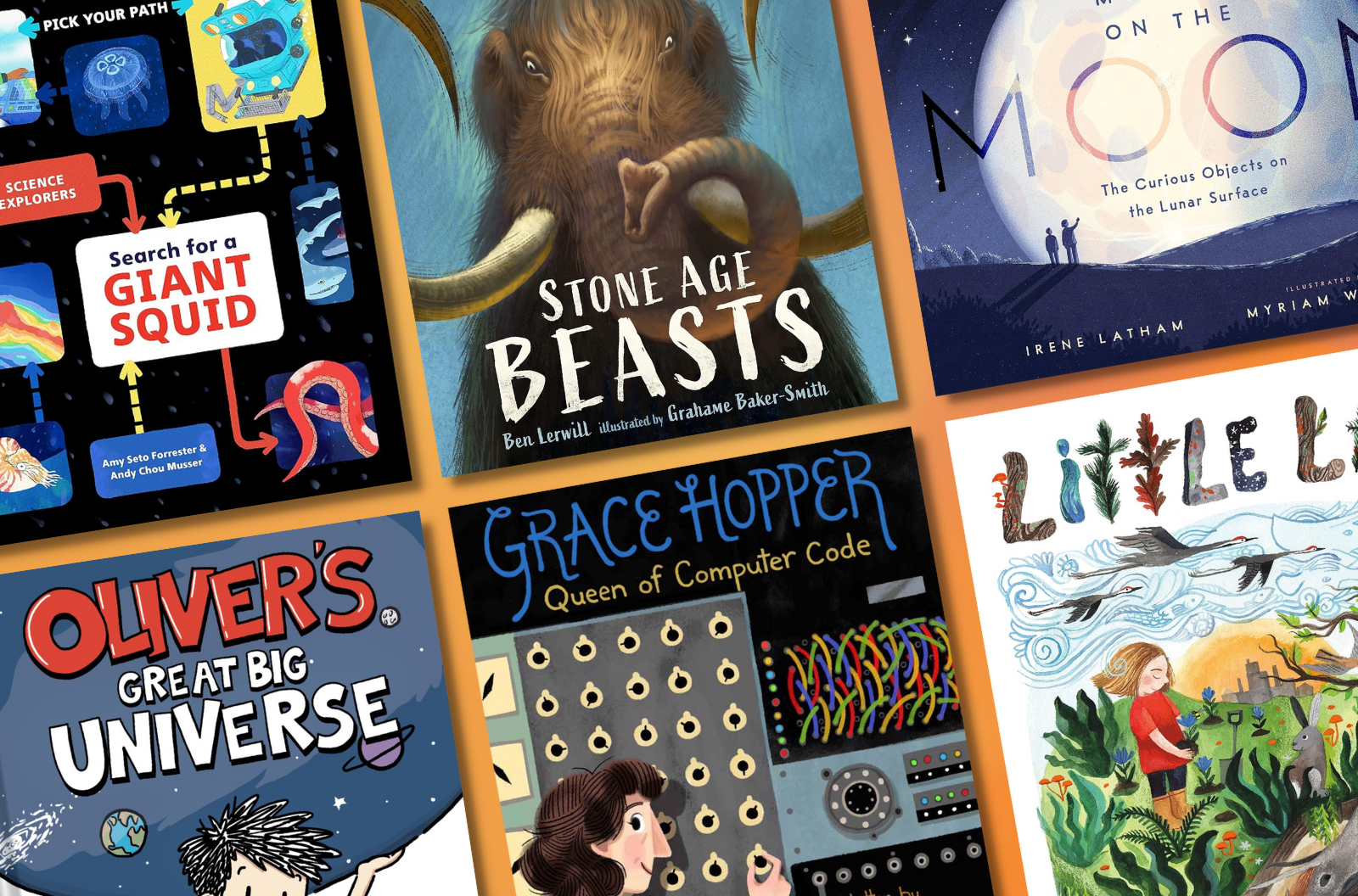 Gift-giving season is upon us once again! And if you’re not sure what to get the kids in your life, we’re here to help. Many new STEM books for kids and young adults came out this year, and we asked a few experts to tell us about their favorites from 2023.
Gift-giving season is upon us once again! And if you’re not sure what to get the kids in your life, we’re here to help. Many new STEM books for kids and young adults came out this year, and we asked a few experts to tell us about their favorites from 2023.
Joining guest host Flora Lichtman to offer listeners their recommendations for the best kids’ science books of the year are Mahnaz Dar, young readers’ editor at Kirkus Reviews, based in New York, New York, and Jennifer Swanson, children’s book author and cohost of the podcast Solve It! for Kids, based in Jacksonville, Florida.
You can download a printable list of our guests’ recommendations to take with you on your shopping trip.
When you purchase products through the Bookshop.org links on this page, Science Friday earns a small commission, which helps support our journalism.
Young Readers’ Editor at Kirkus Reviews
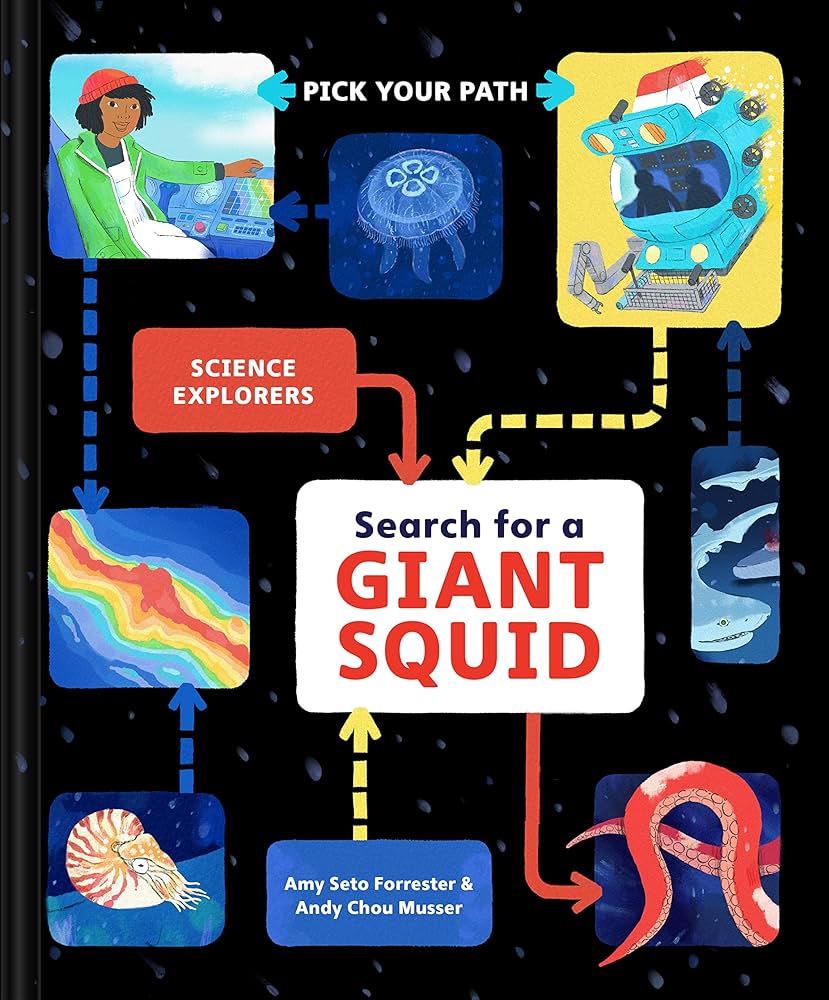 Search for a Giant Squid: Pick Your Path
Search for a Giant Squid: Pick Your Path“This is a kind of choose-your-own adventure, heavily-illustrated book, aimed at ages 6-9. You’re part of a dive team, [and] you’re gonna go look for a giant squid in a submersible. … Sometimes it ends up with you finding the squid, sometimes not.”
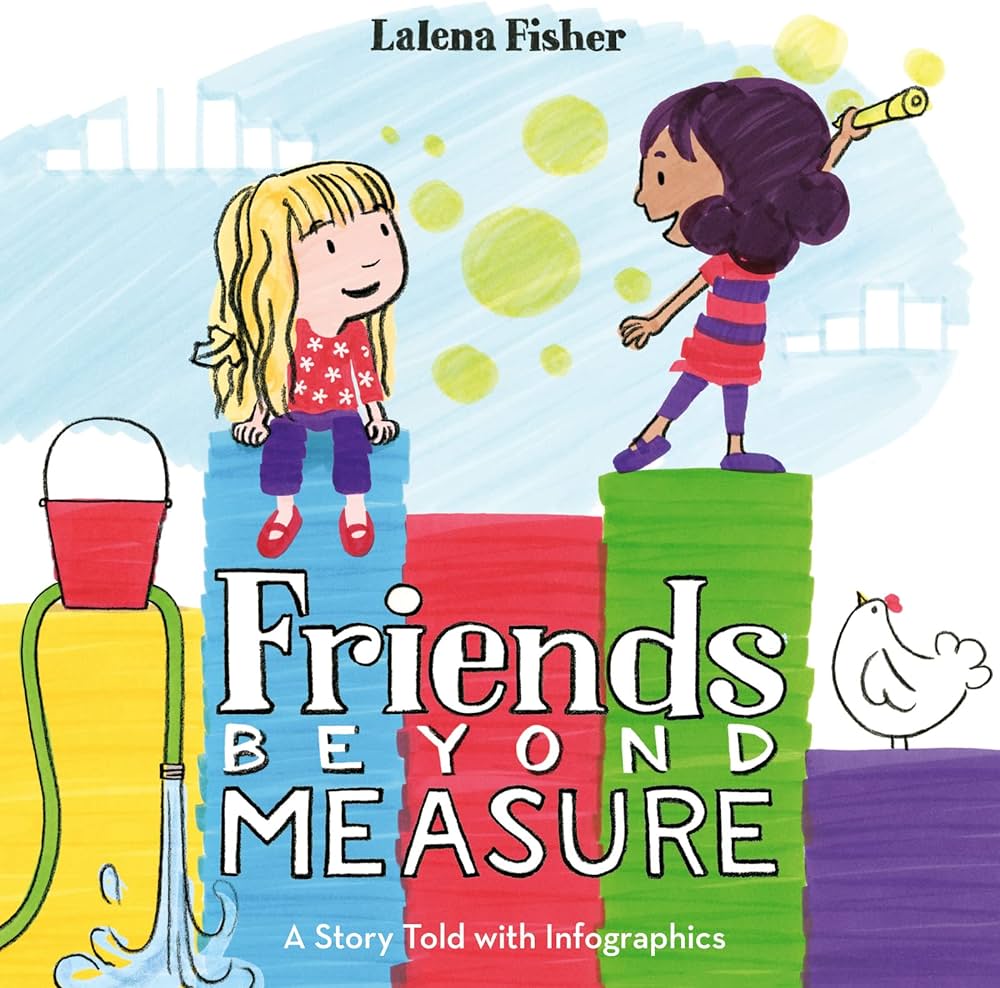 Friends Beyond Measure
Friends Beyond Measure“This one really puts the M in STEM. It’s an infographic book about two characters who are friends. One of them learns that she’s going to be moving soon, and the whole [story] is told through graphs and charts.”
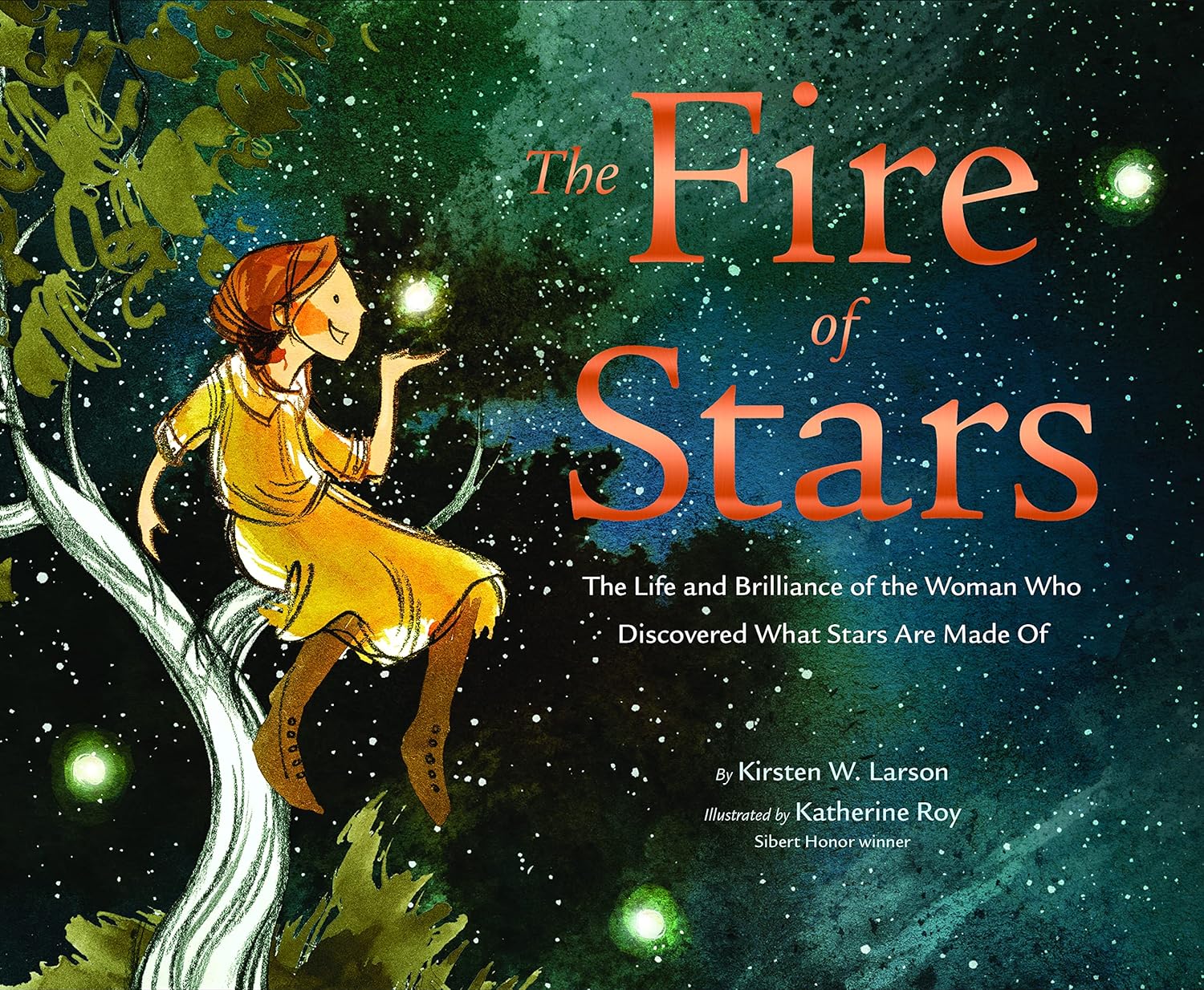 The Fire of Stars
The Fire of Stars“It’s kind of a dual biography. It tells us about [astronomer] Cecilia Payne’s life, but also, on the same page, we’ll see how a star is born and how it progresses.”
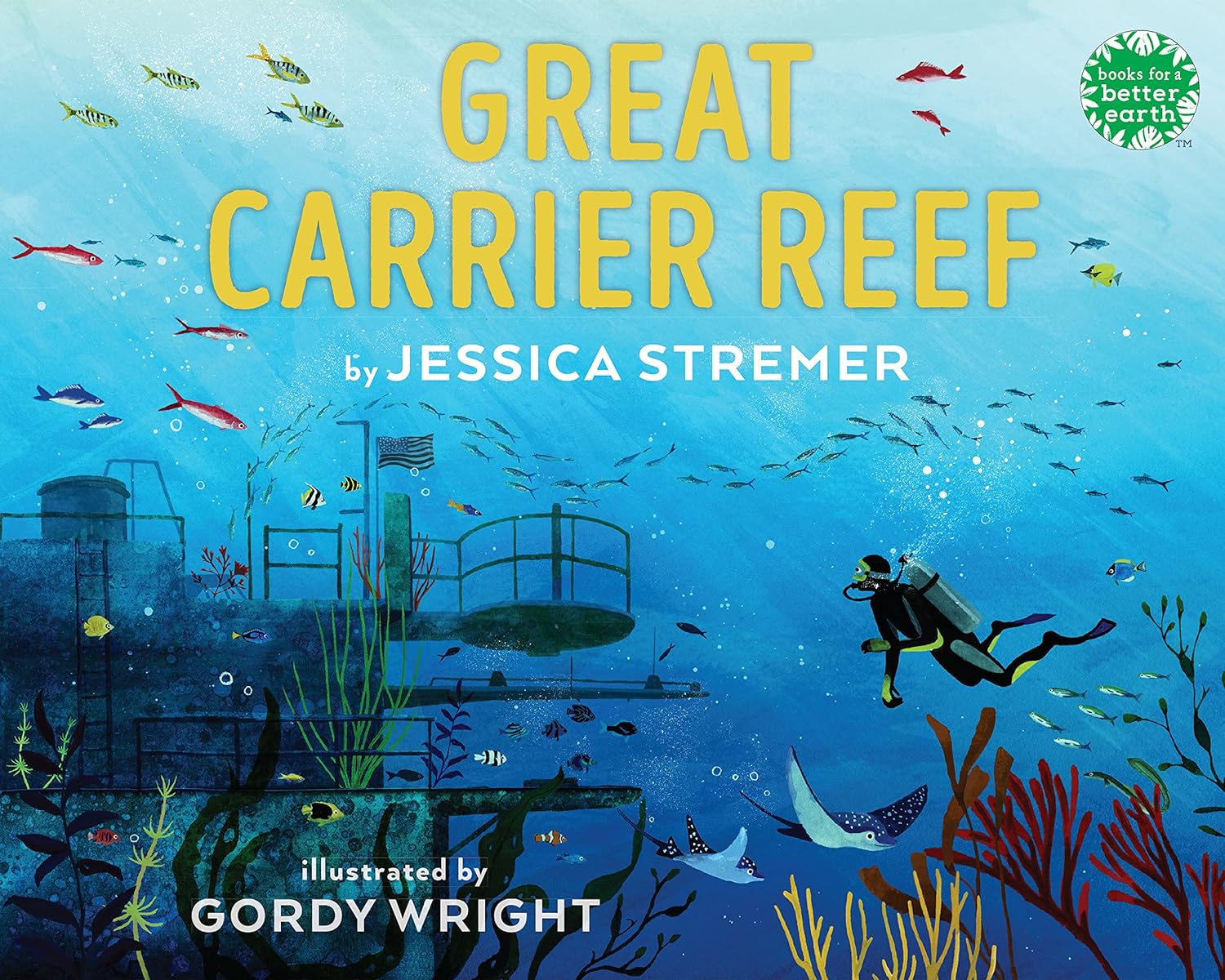 Great Carrier Reef
Great Carrier Reef“It really balances that feeling of hope, with that obvious feelings of despair we all have. … It’s an example of good that is being done.”
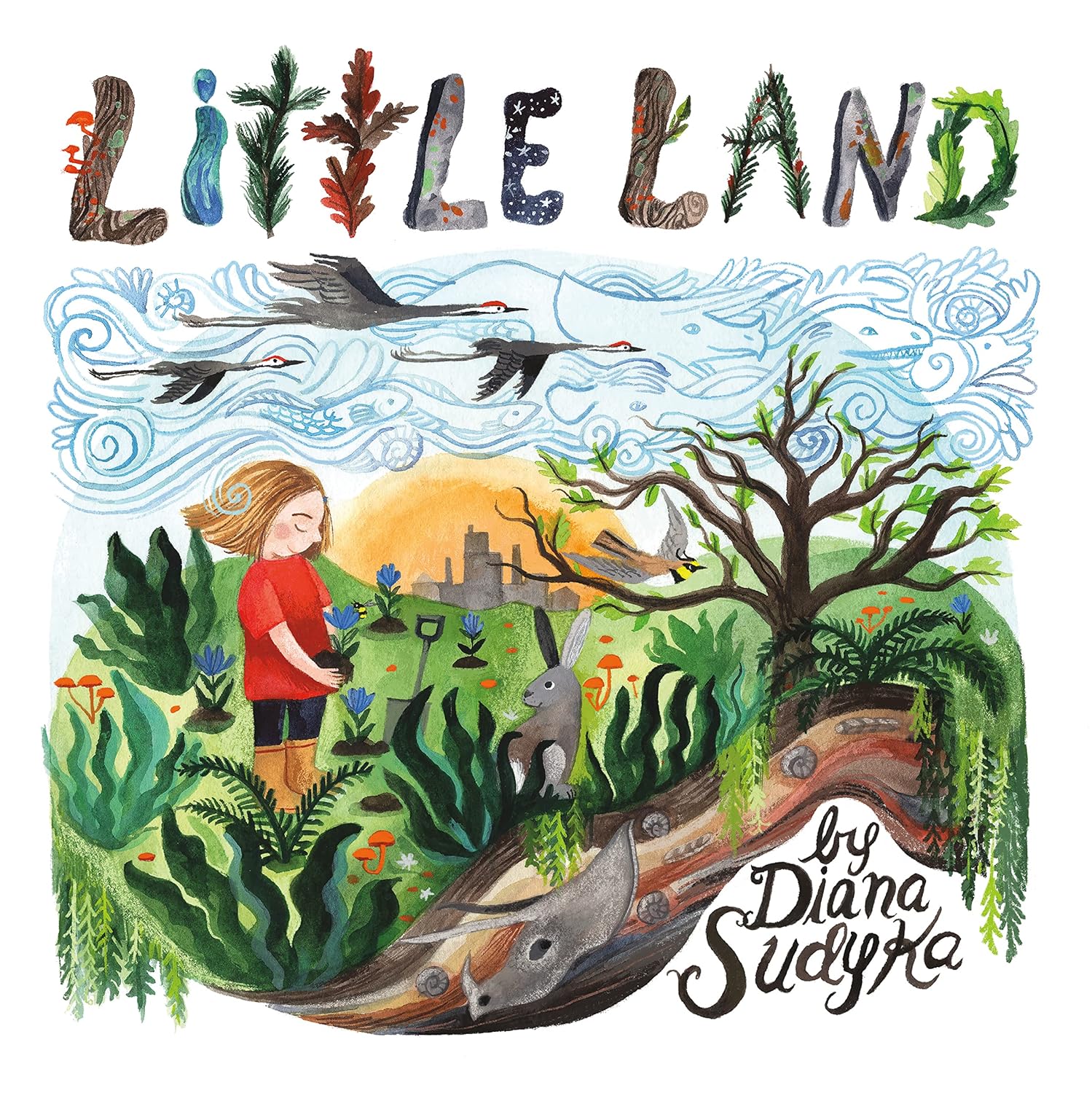 Little Land
Little Land“A general call-to-action: Why we should respect and love our earth, and things we can do to safeguard it.”
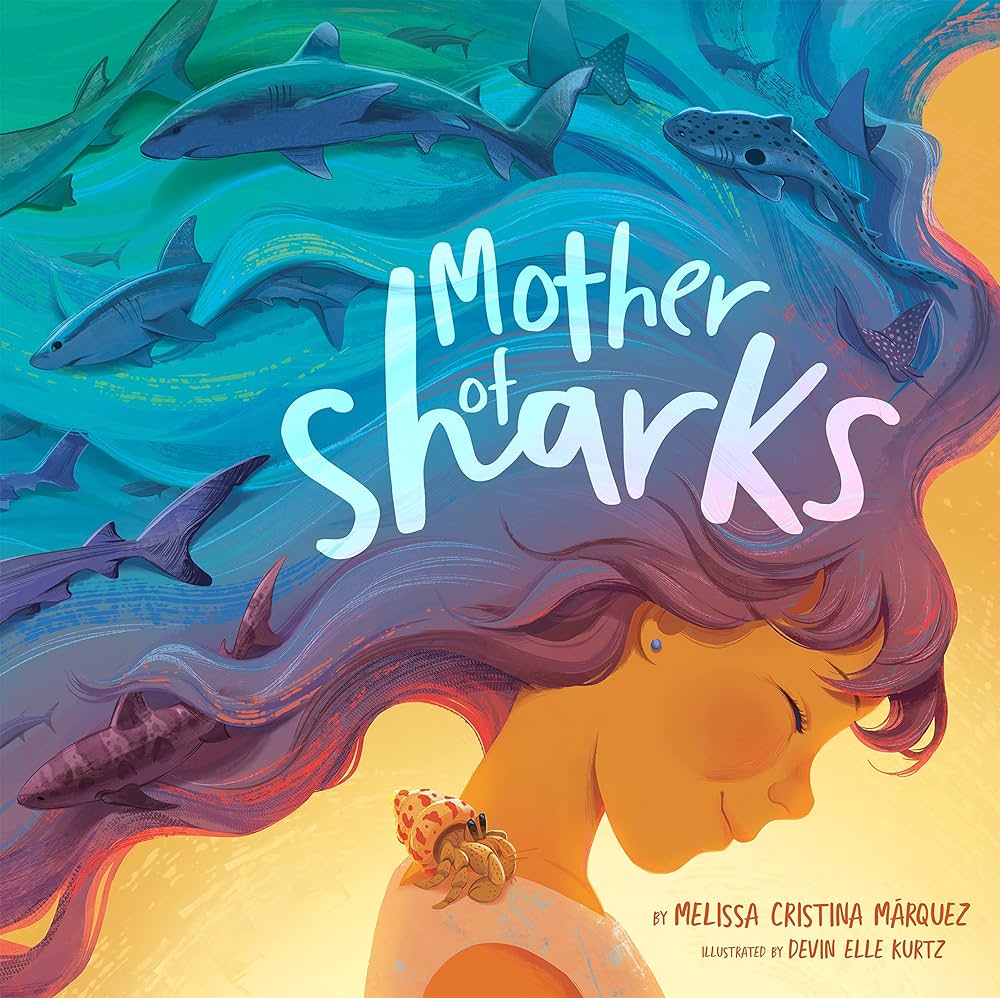 Mother of Sharks
Mother of Sharks“About a little girl who’s like, ‘I want to be a marine biologist, but … I’ve never seen someone who looks like me.’ And then she ends up getting a vision and seeing herself as an adult marine biologist, and becoming inspired.”
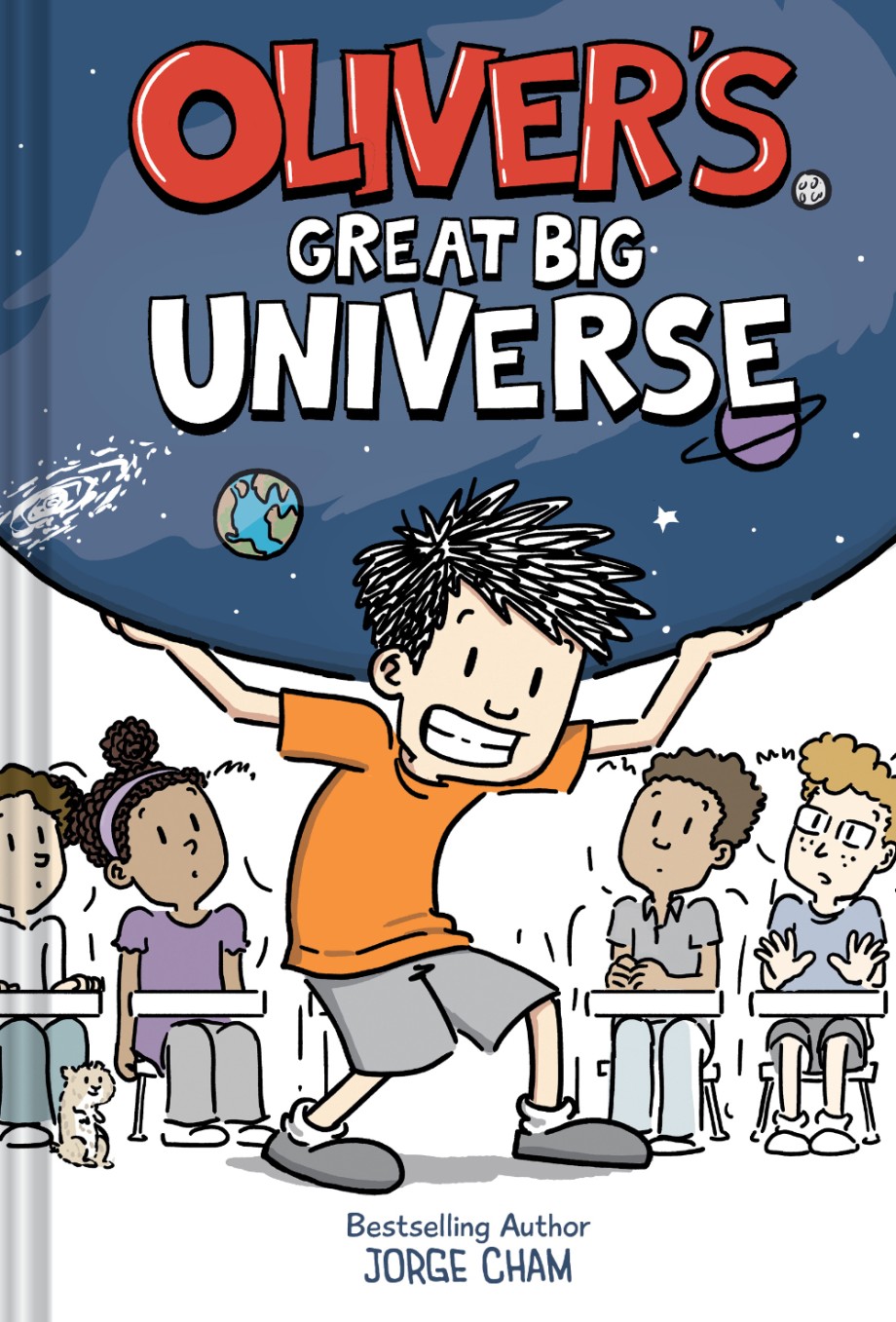 Oliver’s Great Big Universe
Oliver’s Great Big Universe“Diary of a Wimpy Kid fans, rejoice—this comics/prose hybrid follows a budding young astrophysicist as he makes everything from the Big Bang theory to dark matter readily accessible to a middle-grade audience … but it’s got things like fart jokes, bathroom humor, sibling banter.”
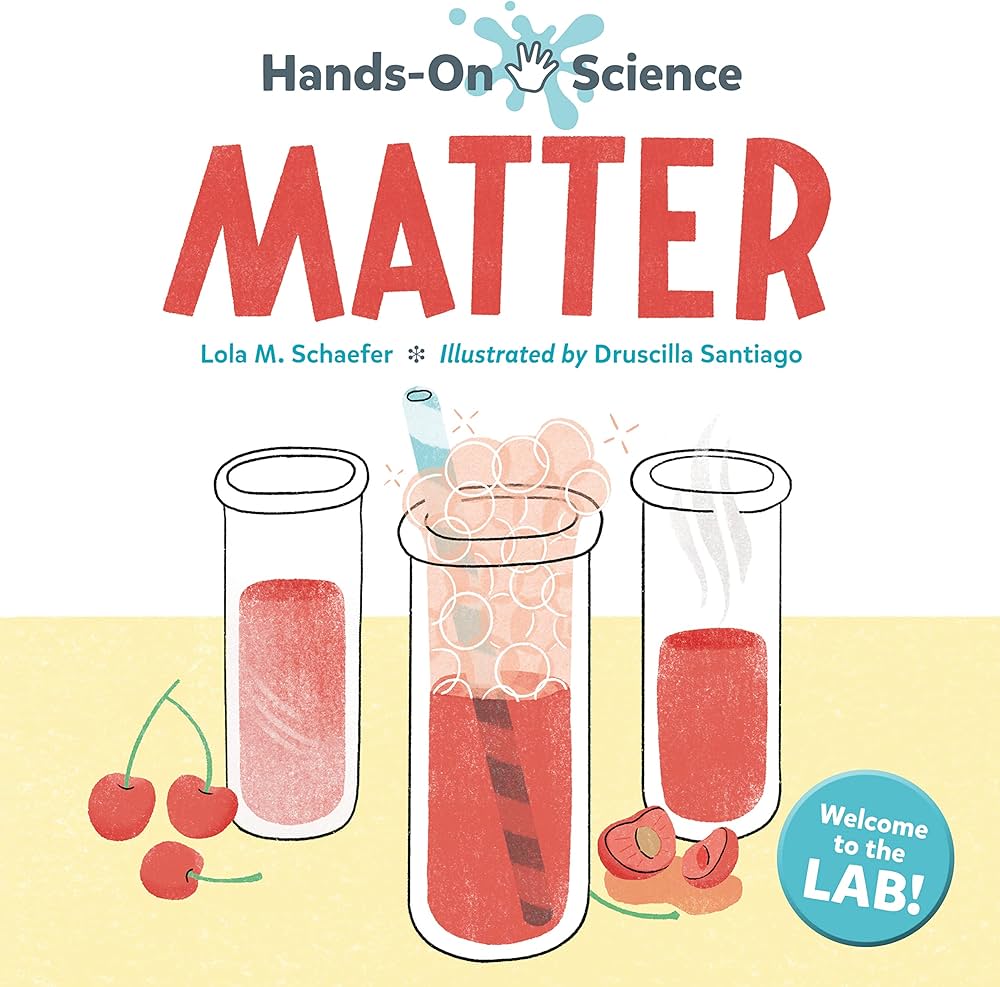 Hands-On Science: Matter, Geology, and Motion
Hands-On Science: Matter, Geology, and Motion“They’re very hands-on, interactive. They invite you to ‘press here’ [or] ‘turn this’ … they have them on different topics.”
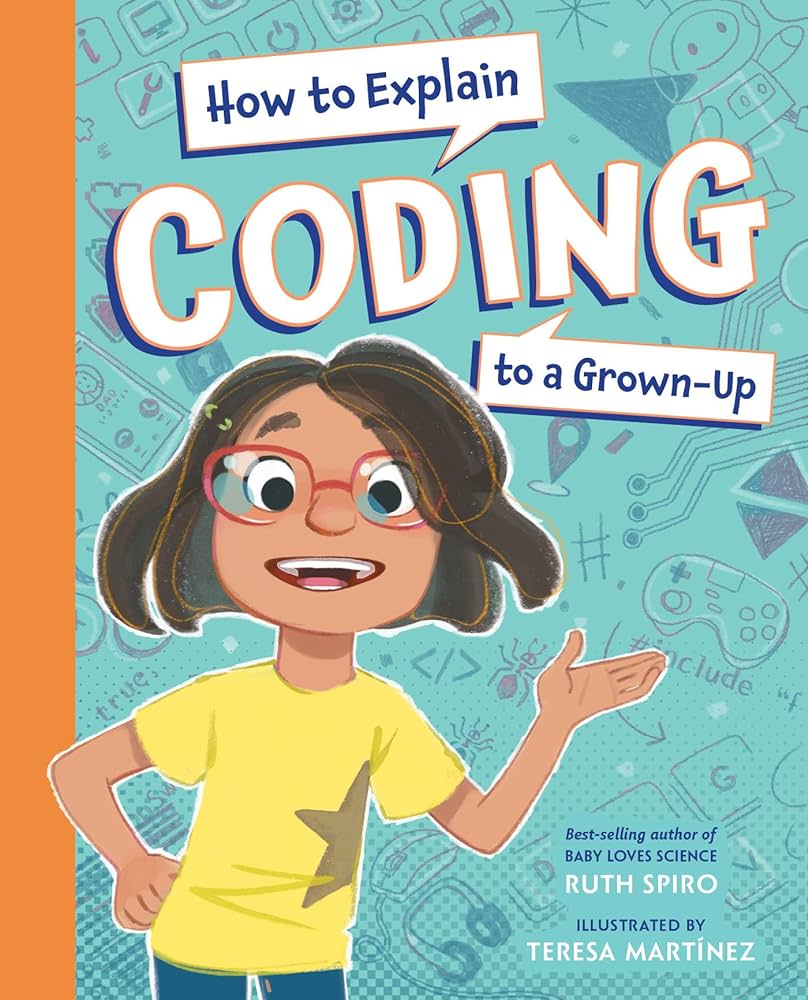 How to Explain Coding to a Grown-Up
How to Explain Coding to a Grown-Up“It uses examples that are very kid-friendly, like how to walk home from [someone’s] house, but using coding.”
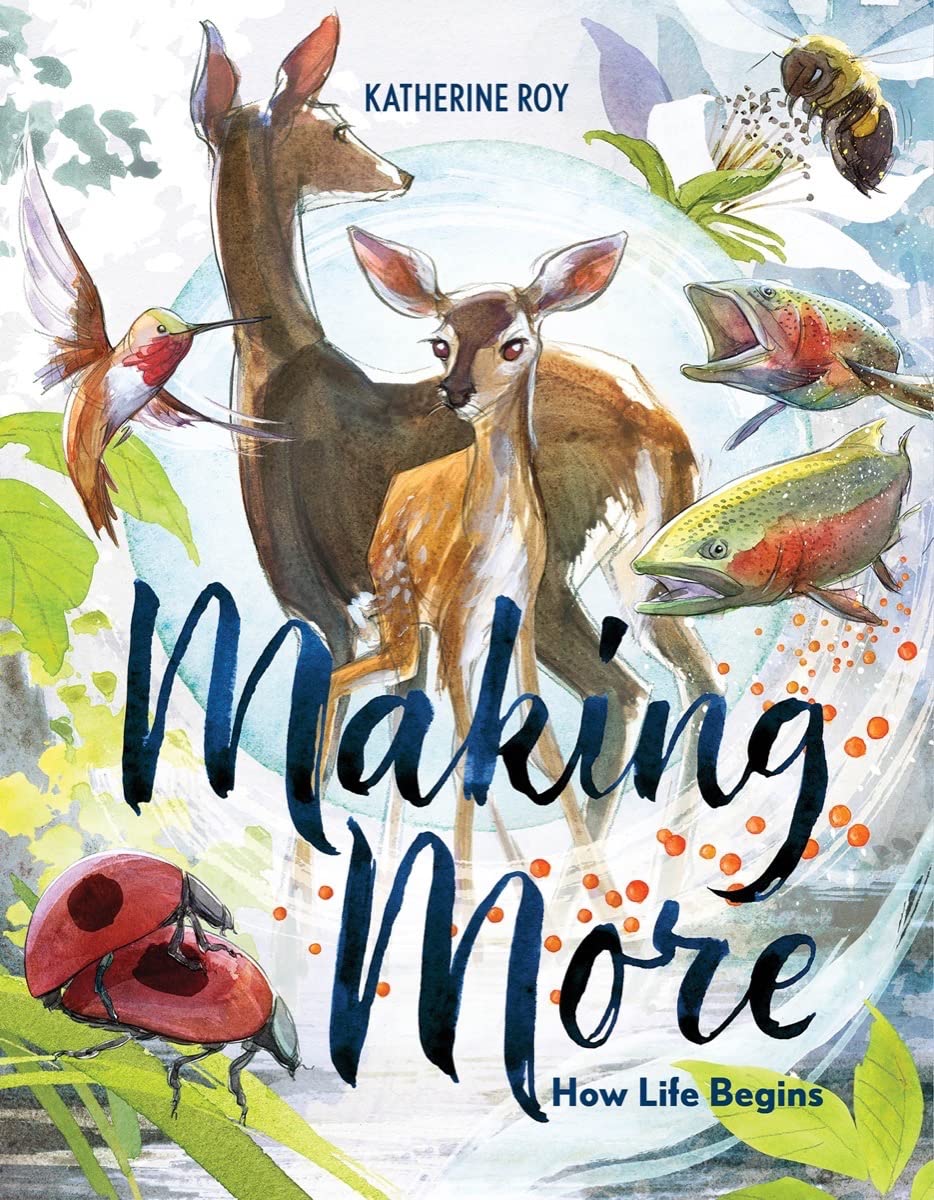 Making More: How Life Begins
Making More: How Life Begins“Relying on inspired visual metaphor and cogent text, this lushly illustrated work is a go-to primer on animal reproduction.”
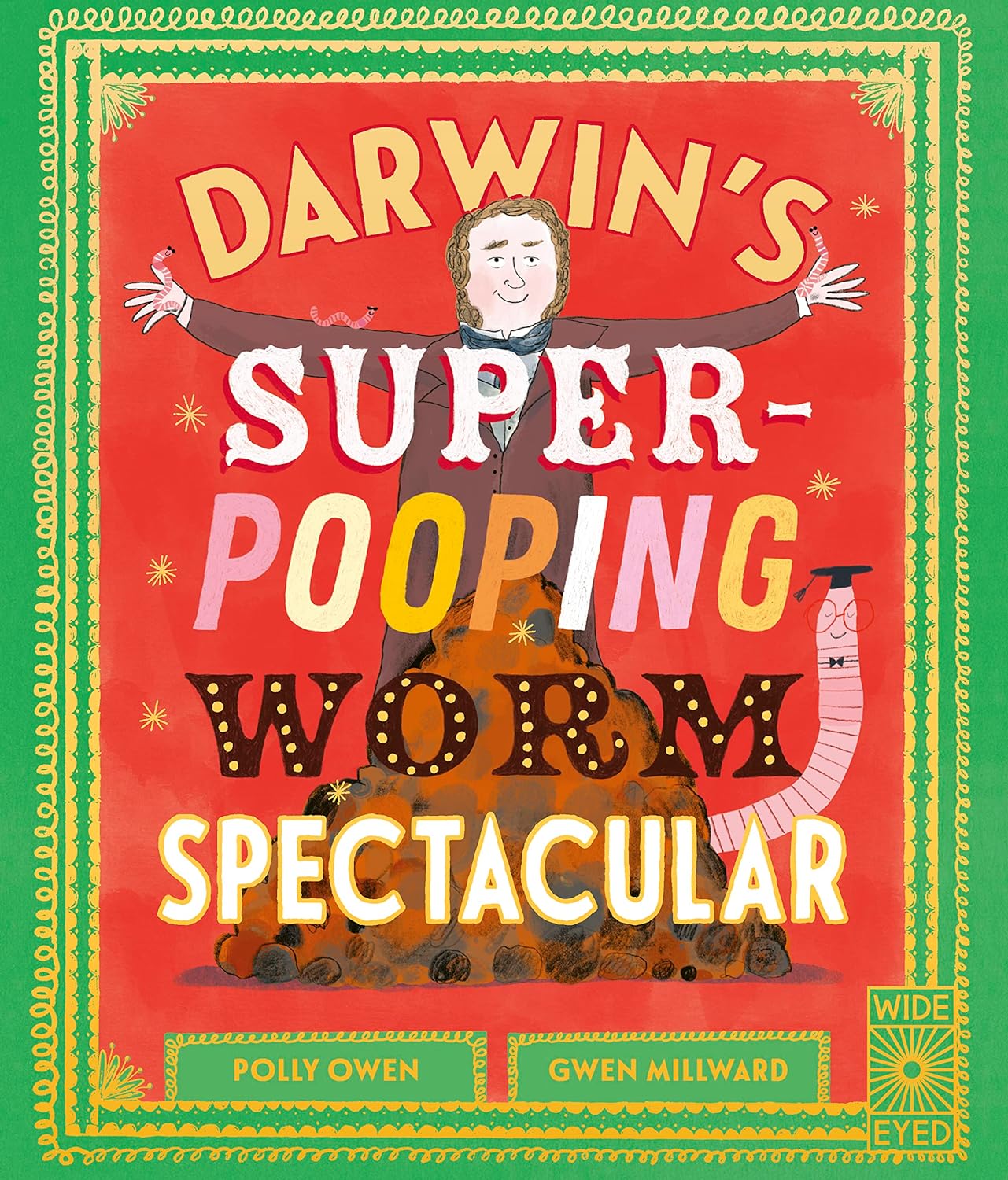 Darwin’s Super-Pooping Worm Spectacular
Darwin’s Super-Pooping Worm Spectacular“Loaded with humor and whimsy, this tale of how Charles Darwin set out to discover what made earthworms so special will inspire burgeoning scientists to try their own hand at experimenting.”
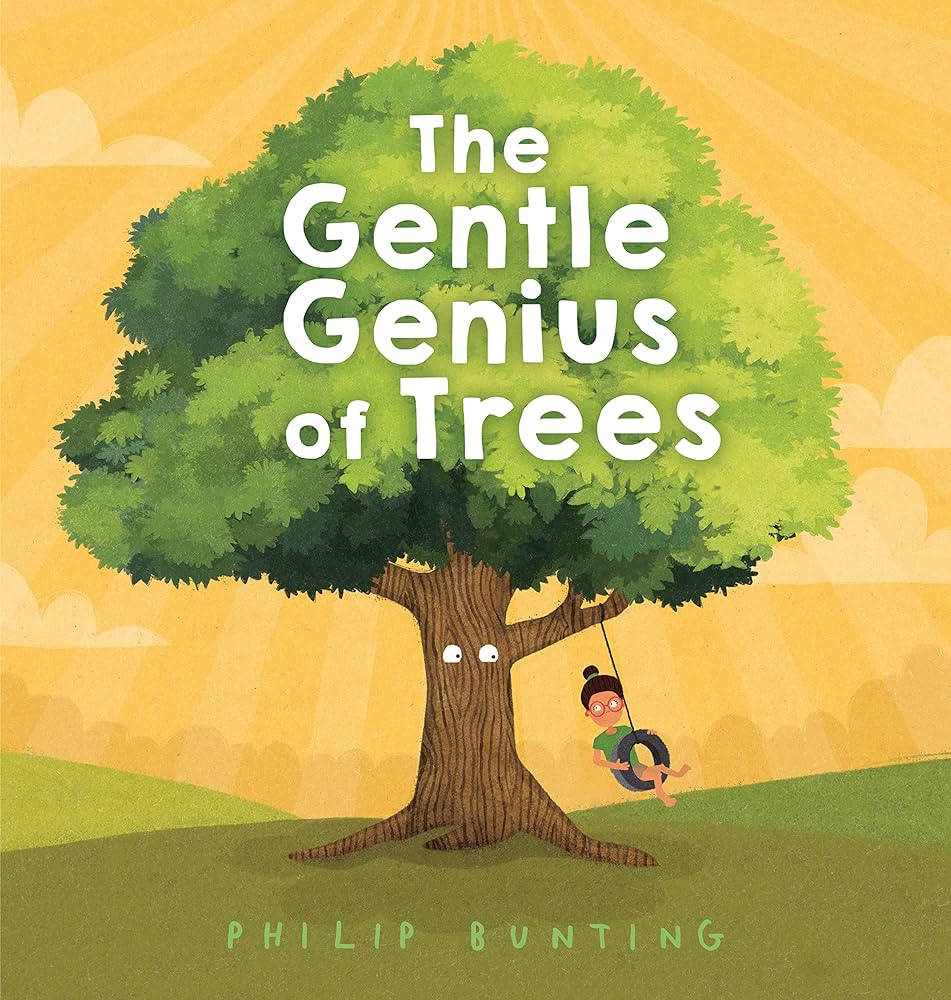 The Gentle Genius of Trees
The Gentle Genius of Trees“By turns quirky, insightful, and even a bit philosophical, this picture book will have readers looking at trees with a newfound respect.”
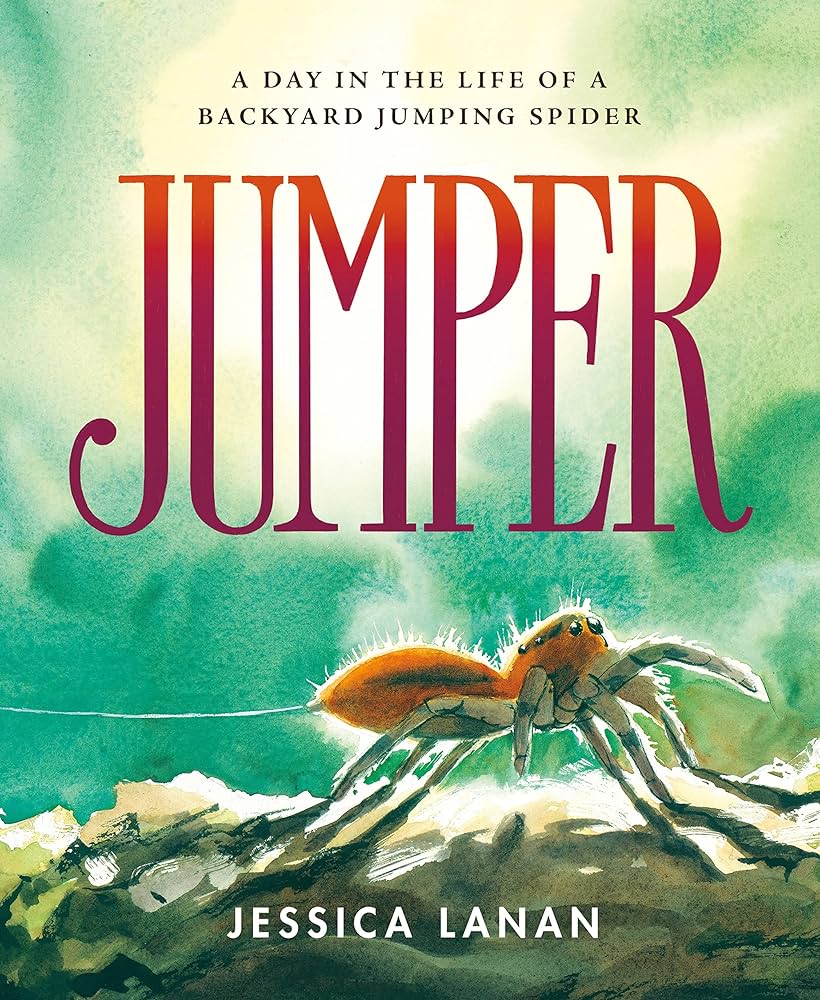 Jumper: A Day in the Life of a Backyard Jumping Spider
Jumper: A Day in the Life of a Backyard Jumping Spider“Loaded with information, this immersive picture book follows a regal jumper as she avoids predators and seeks out prey—even confirmed arachnophobes will be spellbound!”
Cohost of Solve It! for Kids and author of Spacecare: A Kid’s Guide to Surviving Space and other science books for children
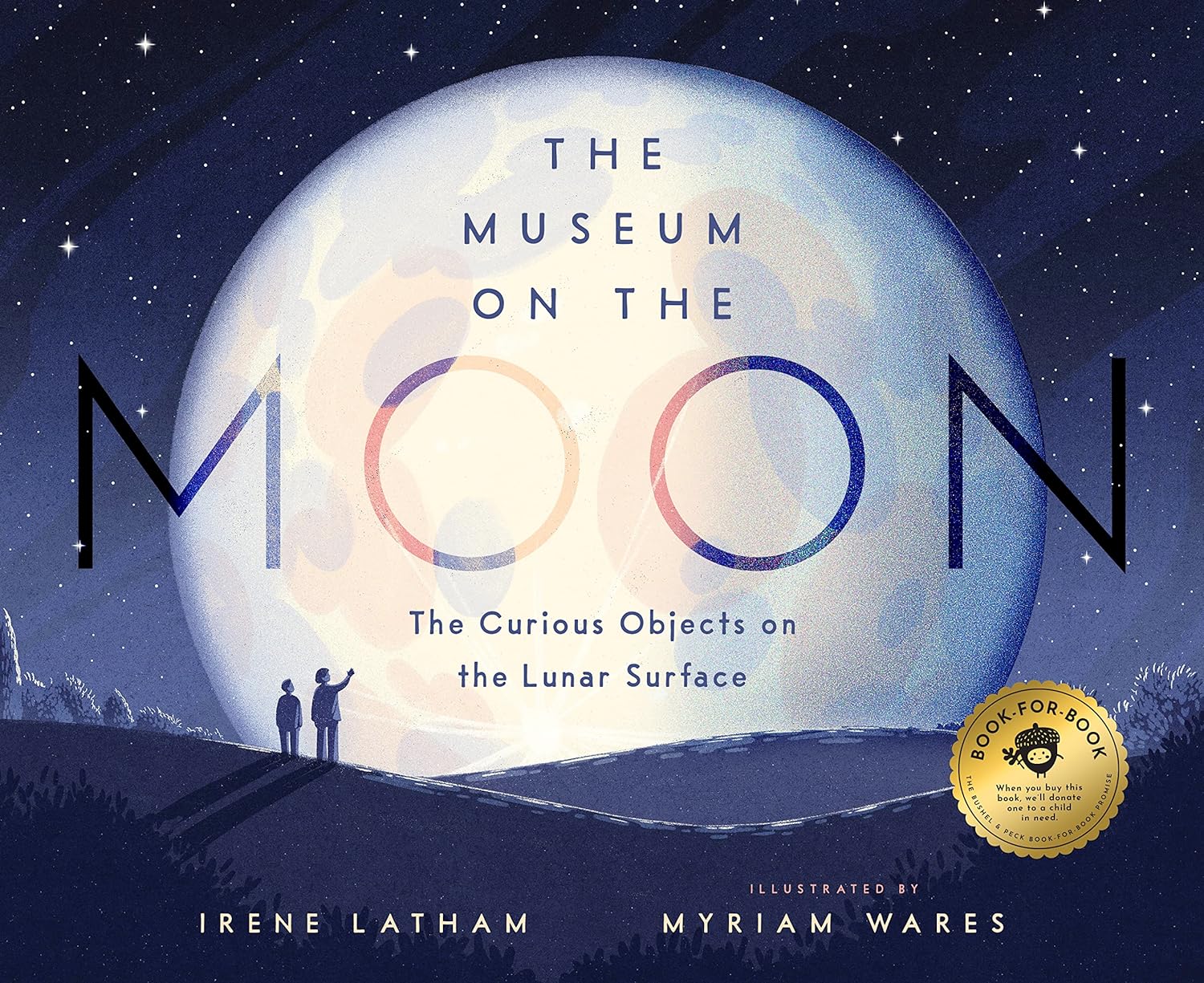 The Museum on the Moon: The Curious Objects on the Lunar Surface
The Museum on the Moon: The Curious Objects on the Lunar Surface“Space is hot; everyone’s excited about it! This is such a unique take on it. It’s also poetic, so you get a combination of STEM with the poetry, so it’s very accessible and fun.”
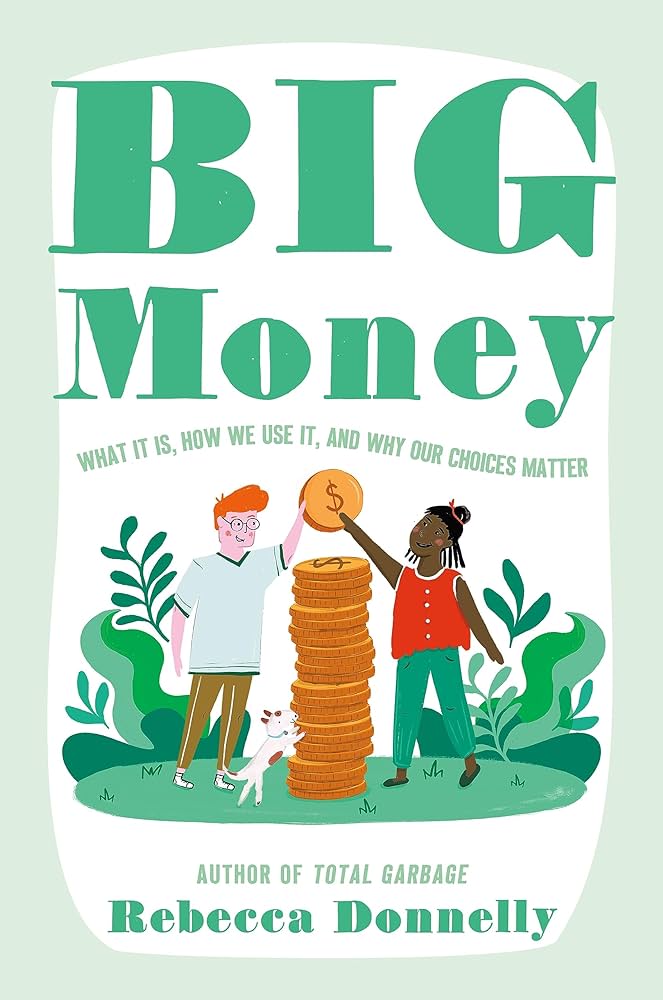 Big Money: What It Is, How We Use It, and Why Our Choices Matter
Big Money: What It Is, How We Use It, and Why Our Choices Matter“I wish I had this when my kids were little. It’s so easy to understand, but it also gives you real-life experiences to talk about, like if you only have X amount of money, how do you choose what you’re going to buy?”
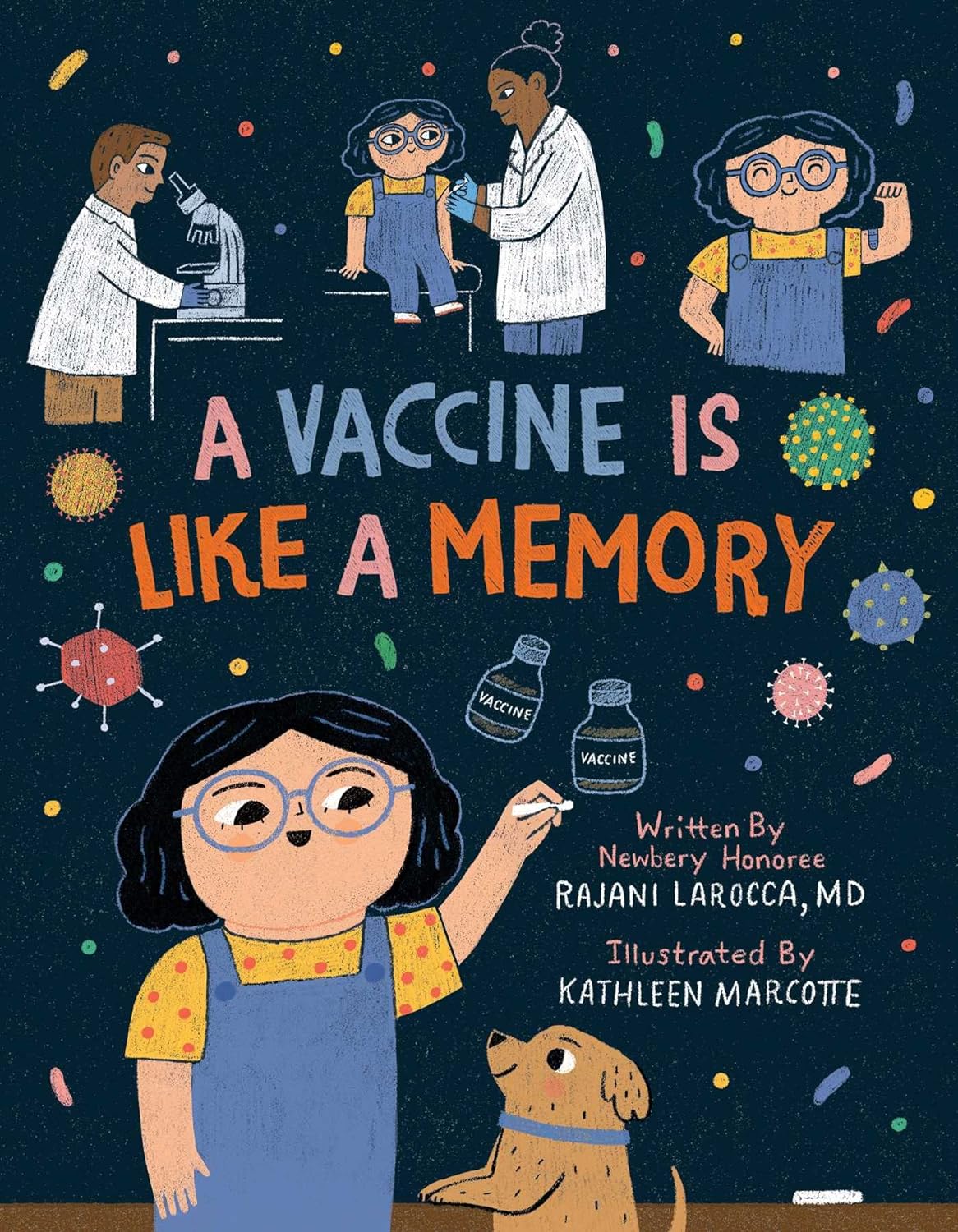 A Vaccine Is Like a Memory
A Vaccine Is Like a Memory“This one goes through the history of vaccines, but then it also goes through how they work in your body. In talking with the author, she also said the important part about this is that we remember what vaccines have done for us in history.”
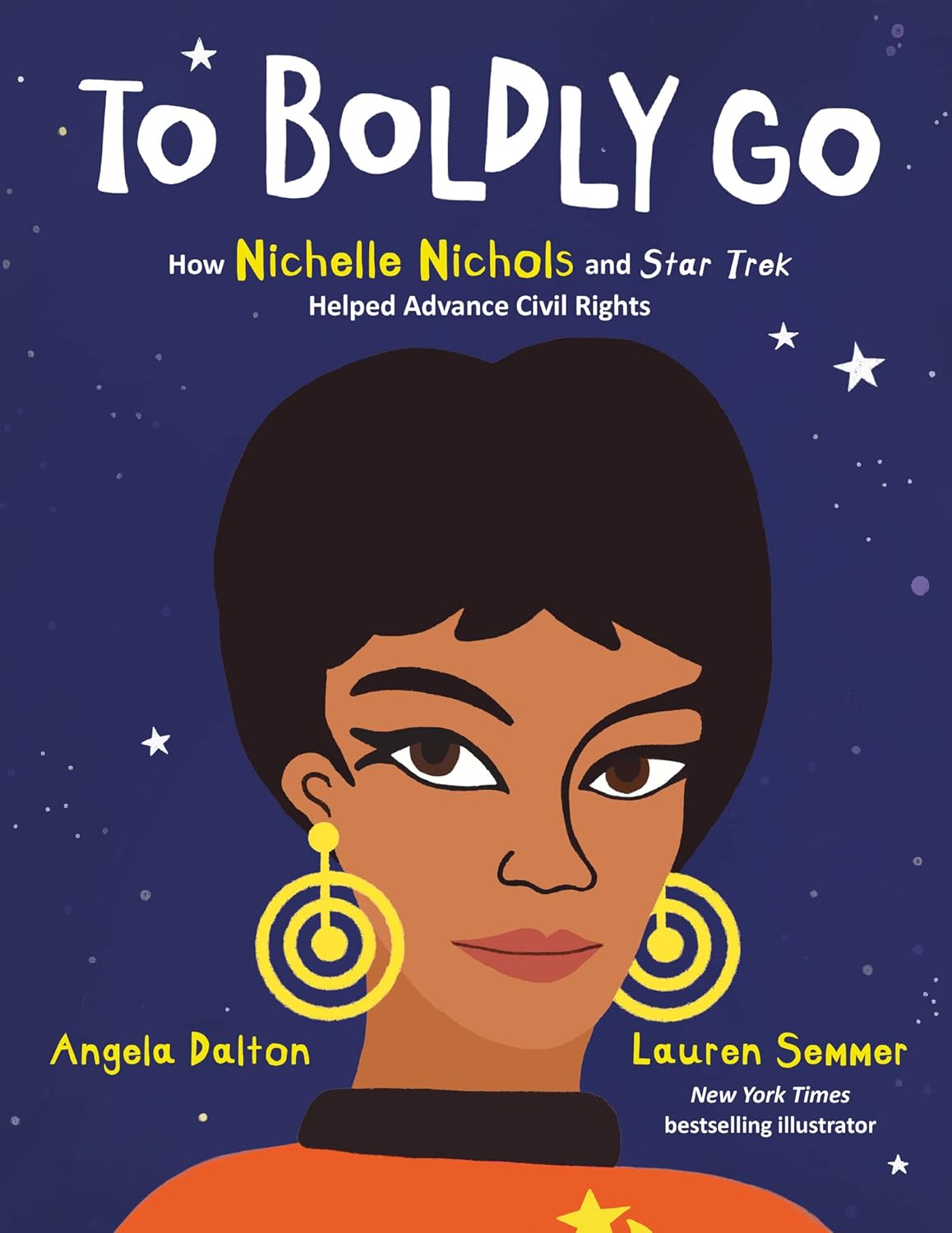 To Boldly Go: How Nichelle Nichols and Star Trek Helped Advance Civil Rights
To Boldly Go: How Nichelle Nichols and Star Trek Helped Advance Civil Rights“[Recommended] if you are a Star Trek fan! [Nichols] was a civilian, so to speak, not a scientist, but helped bring women into the science program.”
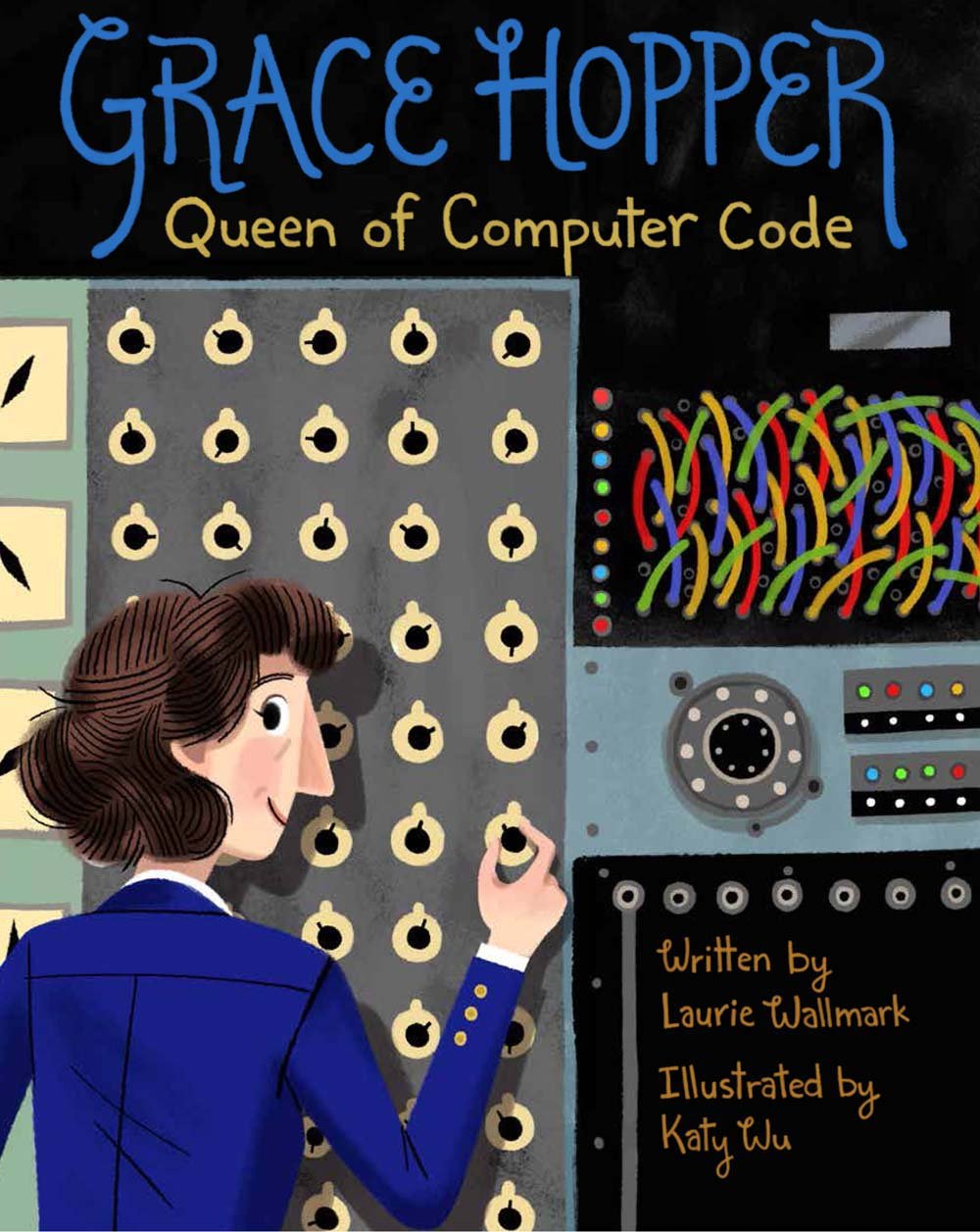
“This one is a biography about Grace Hopper, but it gets you an introduction into coding and how it got started.”
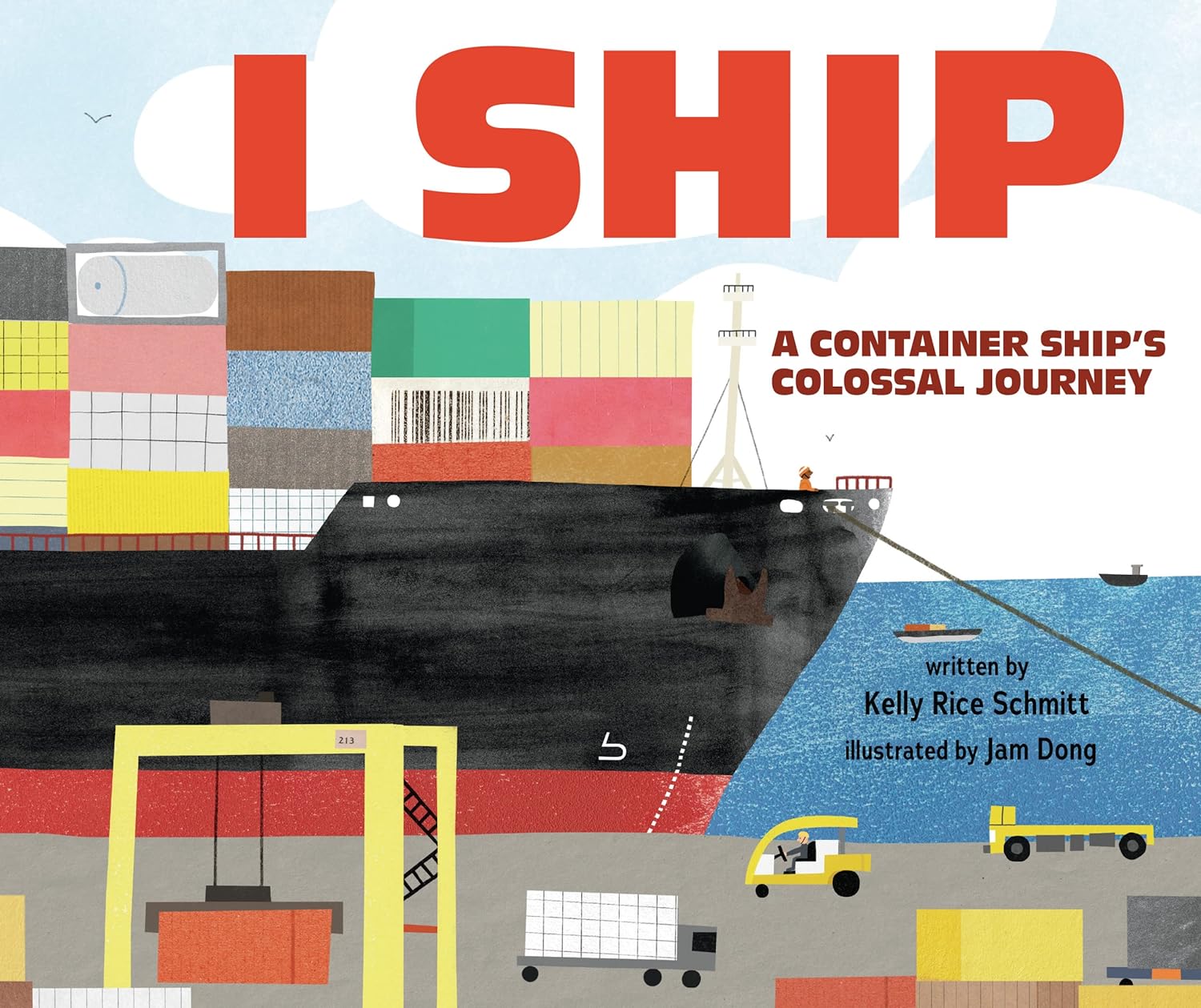 I Ship: A Container Ship’s Colossal Journey
I Ship: A Container Ship’s Colossal Journey“This gorgeously illustrated book gives the reader a uniquely intriguing peek inside the life of a container ship as it goes from place to place, through rough seas, winding rivers, and busy ports. Perfect for the child who has tons of questions about transportation.”
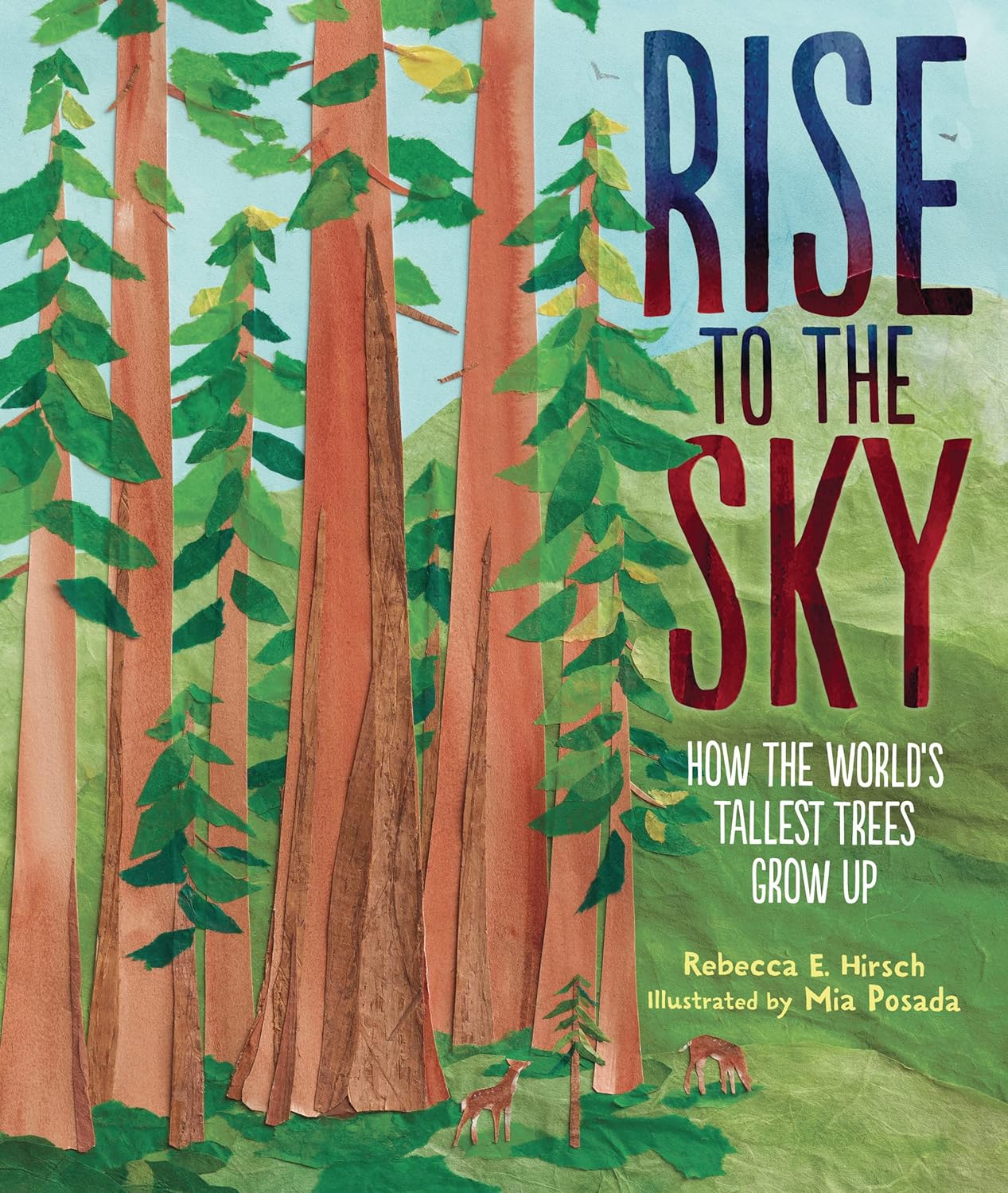 Rise to the Sky: How the World’s Tallest Trees Grow Up
Rise to the Sky: How the World’s Tallest Trees Grow Up“A fantastic comparison of [how] the world’s largest things (trees) come from the smallest things (seeds). The illustrations are gorgeous and engaging and depict the vividness of nature in the wild.”
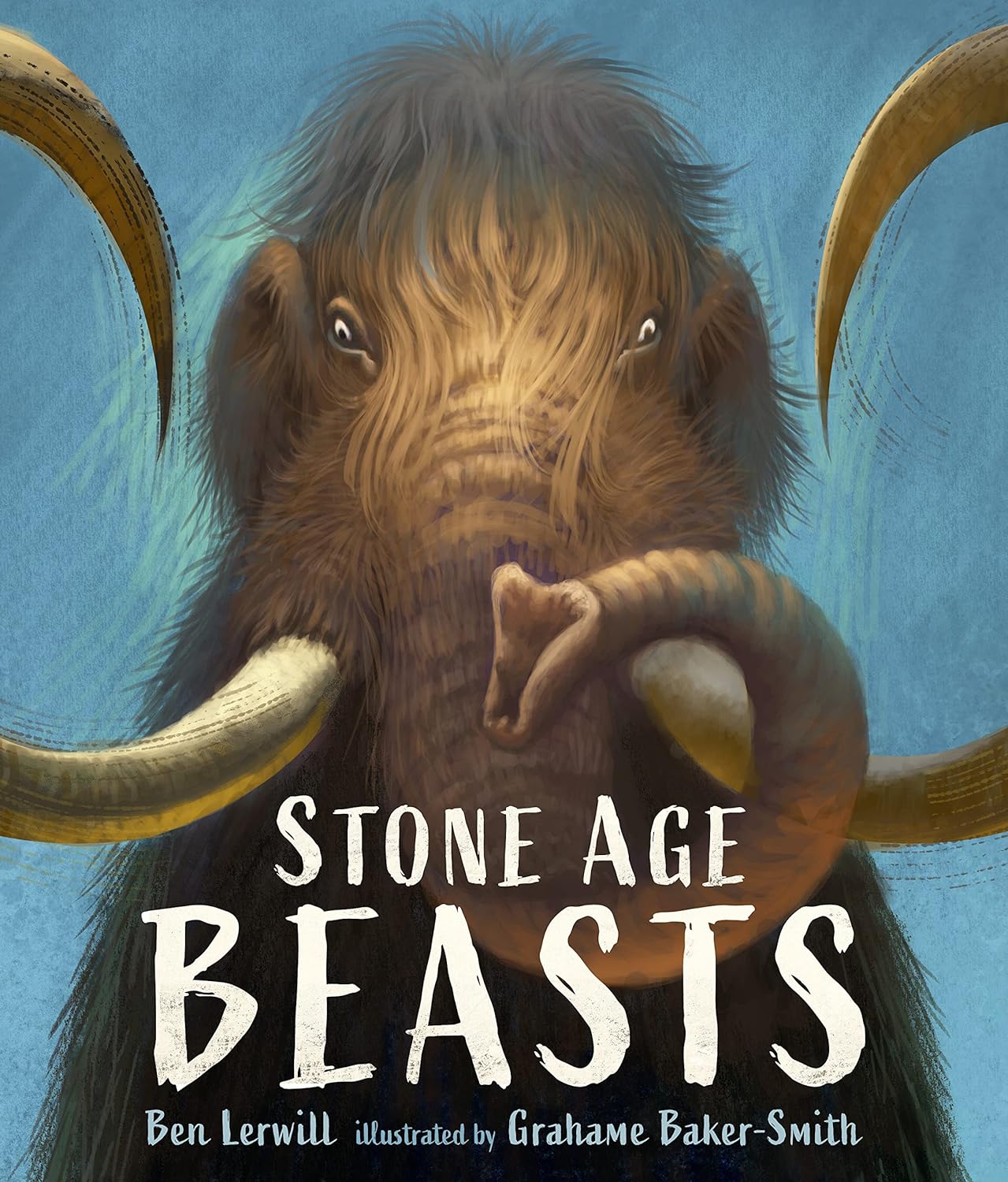 Stone Age Beasts
Stone Age Beasts“Gorgeously illustrated and jam-packed with tons of fun facts, this book places you eye-to-eye with some of the most awe-inspiring prehistoric animals ever to roam our planet.”
Jennifer Swanson also mentioned One Plastic Bag: Isatou Ceesay and the Recycling Women of the Gambia by Miranda Paul; Science Comics: Graphic Novel Series published by First Second Books; Odd Birds: Meet Nature’s Weirdest Flock by Laura Gehl; and How to Catch a Dinosaur by Adam Wallace.
Mahnaz Dar briefly mentioned Rooting for Plants: The Unstoppable Charles S. Parker, Black Botanist and Collector by Janice N. Harrington.
Here are some additional book recommendations from our fans and followers:
Mahnaz Dar is Young Readers’ Editor at Kirkus Reviews in New York, New York.
Jennifer Swanson is an educator, children’s book author, and the creator and cohost of the Solve It! for Kids science podcast. She’s based in Jacksonville, Florida.
FLORA LICHTMAN: This is Science Friday. I’m Flora Lichtman. The Halloween decorations are back in storage, Thanksgiving is next week, and you know what that means. We are entering gift-giving season, that very special time of year when you get to agonize for weeks about how to show the special people in your life that you appreciate and love them. And if you are like me, every year, you drag your heels until the perfect gifts are back ordered, and you are definitely paying for express shipping.
So this week, we are going to give you a head start with some gift ideas for the kids in your life. A slew of great new sciencey books for kids and young adults came out this year. And today, we have got two expert bookworms on the line to give you recommendations. Mahnaz Dar is the young readers editor at Kirkus Reviews, based in New York. And Jennifer Swanson is an educator, children’s book author, and co-host of the Solve It! for Kids podcast. She’s based in Jacksonville, Florida. Welcome, both of you, to Science Friday.
MAHNAZ DAR: Thanks for having me, Flora.
JENNIFER SWANSON: Great to be here.
FLORA LICHTMAN: A quick note– this conversation was recorded in front of a live Zoom audience. For more information about how to join a future live stream, head to sciencefriday.com/livestream.
OK, Mahnaz, let’s start with you. You must read hundreds of children’s books every year for your job. I’m wondering, is the form changing? Are science books for kids different these days than they used to be?
MAHNAZ DAR: Yeah, they’ve come a long way. I was just thinking about how they were when I was growing up. When I was in elementary and middle school, librarians would book talk me cool fiction, but no one was ever like, oh, my God, and here’s this really cool book on octopuses that you have to read. Those books were kind of very dry, photo-heavy, and they would give them to you if you were doing a project. And they were these dry recitations of fact.
And what I’ve noticed in the last few years is just how vibrant nonfiction is. It can be kind of a hybrid thing. You see some books that are blending fiction stories with facts, just to make it more fun. You see books that are really illustrated, just books that take a really creative view of the topic and that are just really fun and engaging to read in ways that I don’t think nonfiction always was in the past.
FLORA LICHTMAN: Jennifer, as an author and consumer, what science subject matter do you think works best for kids, besides poop?
JENNIFER SWANSON: Well, let’s see. There’s so many. Space is hot right now. Everybody’s excited about space. There’s always the ocean. And then animals– dinosaurs, everybody wants to know about dinosaurs and all of these different animals and creatures.
So I think some of the best books are the ones that get kids thinking, get them curious, and also show them how they can interact. Some of these books these days are interactive, which is even better, because science is best in action, in my opinion.
FLORA LICHTMAN: Do you have a favorite subject to write about?
JENNIFER SWANSON: I do. Of late, my new book is Space Care: A Kid’s Guide to Surviving Space. It’s all the cool and a little strange things that happen to the body as we live in microgravity. But probably, if you want an example of exactly what I love to write about, it’s my book Astronaut, Aquanaut: How Space Science and Sea Science Interact. And this one talks about space and the ocean. And if you want to know about me, this is what I write about. [LAUGHS]
FLORA LICHTMAN: All right, let’s get to some recommendations. Mahnaz, give me your top two or three favorite sciencey STEM books for kids from this year.
MAHNAZ DAR: Sure. My first one is called Search for a Giant Squid by Amy Seto Forrester, illustrated by Andy Chou Musser. And this is a kind of choose your own adventure, heavily illustrated book aimed at ages about 6 to 9.
The premise is you’re part of a dive team. You’re going to go look for a giant squid in a submersible. There’s all this info about ocean zones, the different equipment you’re going to take. And then you just get to choose, like, OK, do you want to choose this captain? Where are you going to go? What’s going to happen?
Sometimes it ends up with you finding the squid, sometimes not. So it’s got that really fun, interactive element. And what I also love is that all of the characters, all– the people are all of color. They’re all different body shapes. And I feel like that’s really important because often, we’ve seen science and STEM where it’s all white male scientists, which we know that’s not how it is or how it should be. So this is really refreshing and a wonderful thing.
My second is called Friends Beyond Measure by Lalena Fisher. This is a picture book about ages 5 to 9. And this one really puts the M in STEM. There’s a little bit of math here. So it’s an infographic book about two characters who are friends. One of them learns that she’s going to be moving soon.
And the whole thing is kind of told through graphs and charts, bar charts, pie charts. My favorite is one of the characters is slumped over a bar chart that illustrates her many complicated emotions. The highest bar is shock. Then there’s sadness.
And I just think it’s a really fun way to introduce mathematical concepts, things like Venn diagrams. And for some kids who think of math as kind of scary and anxiety provoking, it shows them that you can also have some creativity and a little bit of fun. It’s not just about getting the right answer.
And my last one is called The Fire of Stars: The Life and Brilliance of the Woman Who Discovered What Stars Are Made Of by Kirsten W. Larson, illustrated by Katherine Roy. And I have the cover for this one. It’s really gorgeous.
This is a picture book biography of Cecilia Payne, an astrophysicist born in 1900 who discovered what stars are made of. I think it’s really amazing, because it’s kind of a dual biography. It tells us about Cecilia Payne’s life, but also on the same page, we’ll see how a star is born and how it progresses.
It’s so lyrical. It’s beautiful. The illustrations are just soaring. And I think it’s also another example of we’ve seen how STEM has gotten more diverse. But here’s an example of even in the 1900s, a woman scientist making great strides. So I think that’s just one of my favorites from this year.
FLORA LICHTMAN: This is Science Friday from WNYC Studios. Jennifer, what about you? Top three? Top three books?
JENNIFER SWANSON: So I have to agree with Search for Giant Squid. That was on one of my top three. I thought that was just a truly amazing book.
So my top three, my first one is The Museum on the Moon: The Curious Objects on the Lunar Surface by Irene Latham, illustrated by Myriam Wares. So as I said before, space is hot. Everybody’s excited about space.
And this is such a unique take on it. It’s all about the things that get left behind on space by the humans that visited there in the past, and whether or not this should be a museum. And it’s also poetic. So you get a combination of STEM with the poetry. So it’s very accessible and fun. And the illustrations are just gorgeous.
My second one is actually Big Money: What Is It, How We Use It, and Why Do Our Choices Matter? by Rebecca Donnelly. And I think this one is so fun. I wish I had this when my kids were little.
FLORA LICHTMAN: I feel like I need this now. Just say–
JENNIFER SWANSON: I need it now, too. Let me have that book.
It’s so easy to understand. And there are steps in here. But it also gives you real-life experiences to talk about. Like, if you only have X amount of money, how do you choose what you’re going to buy and all these different things. So this is a must-read, I think, for many people, those of us who struggle with budgets, perhaps. [LAUGHS]
And my last one is A Vaccine is Like a Memory by Rajani LaRocca, illustrated by Kathleen Marcotte. I hope I said that properly. This book is just so cool. I mean, vaccines are all the things that we’re all talking about. And this one goes through the history of vaccines. But then it also goes through how they work in your body.
It actually works because when you get a vaccine, your body remembers how it fought it off. But in talking to the author, she also said the important part about this is that we remember what vaccines have done for us in history. So this is a really, really cool book.
You can see there are gorgeous illustrations inside. And there’s lots of text. But it’s broken up easily. So you can go through it with smaller children. And it’s just tons of fun. So I would recommend those three.
But I think Mahnaz and I were talking before, there’s so many of them out there this year. So yay for STEM books.
FLORA LICHTMAN: We have to take a quick break. But when we come back, more science book recommendations for kids.
This is Science Friday. I’m Flora Lichtman. If you’re just joining us, we’re continuing our conversation about some of the best new sciencey books for kids with my guests. Mahnaz Dar is the young readers editor at Kirkus Reviews based in New York. And Jennifer Swanson is an educator, children’s book author, and co-host of the Solve It! for Kids podcast. She’s based in Jacksonville, Florida.
And a quick reminder, this conversation was recorded in front of a live Zoom audience. Let’s go to our listeners. Deborah from Philadelphia has a question about science starter books. Deborah, welcome to Science Friday.
DEBORAH: Hi I was wondering if both of you could recommend a, quote, starter book for 10- to 12-year-olds who maybe aren’t that aware of conservation, the natural environment. And I’m wondering if you could recommend any of those books that are at easy reading level comprehension, medium comprehension, and maybe for advanced. There are a number of 10- to 12-year-olds in our family, and I was thinking, well, even though I participate in a lot of conservation and environmental activities, I can’t quite seem to get them jazzed up about it just yet. And I thought maybe there’s a book or two out there that would be the voice, the outside voice that they might want to listen to and engage with. Thanks.
FLORA LICHTMAN: Mahnaz, Jennifer, any books come to mind?
MAHNAZ DAR: Well, you asked for three levels. I could start us off with some easy books. So I know you said ages 10. But I do have a couple of picture books that I think could be good, because sometimes picture books are just a good way for, like, especially the whole family, to kind of get into a topic.
One of my favorites from this year is called The Great Carrier Reef by Jessica Stremer. And it’s about a conservation project that was done, creating kind of an artificial barrier reef. And I love that it’s a beautiful text. It’s beautiful illustrations.
I feel like it really balances that feeling of hope with the obvious feelings of despair that we all have, because it’s easy to get, I think, really sad about it. But it’s an example of good that is being done. So it is one of my favorites from this year.
And another picture book that I love is called Little Land by Diana Sudyka. It’s kind of a general sort of call to action, sort of an idea of why we should respect and love our Earth and things we can do to safeguard it.
FLORA LICHTMAN: Jennifer, any to add?
JENNIFER SWANSON: Well, this one’s a little bit older. But what comes to mind for me is One Plastic Bag by Miranda Paul.
MAHNAZ DAR: Oh, that’s a good one.
JENNIFER SWANSON: Yeah. And that kind of tells the story of how just beginning picking up plastic bags in the country– I believe it was Gambia– kind of changed how they looked at conservation. And so it’s just one small step, and it turned into this huge thing. So that’s always a really good place to start with kids, in my opinion, with conservation, to include them and then kind of make it a family thing.
FLORA LICHTMAN: Mahnaz, I want to come back to this idea that you mentioned earlier about representation in these books. Do you feel like we’re moving away, please, from the old man with unruly white hair, his scientist trope.
MAHNAZ DAR: I think that trope has long been an aggravating one. And I think we still see these attitudes. We still see sexism and racism in the wider world. But I feel like kid lit authors have done a really great job of combating that.
And I’ve seen so many more books that are profiling scientists of color. One of my favorites from this year is about a Black Botanist called Rooting for Plants. And then also, I think just seeing authors of color writing books, even if it’s not necessarily about someone of color, I think that’s important, too, that you don’t necessarily have to be writing about oppression all the time. I think it’s important for kids to see, even if they’re just looking at the back of the book and seeing the author photo, just to see people who look like them who are writing about lions and tigers and bugs and all those good things.
FLORA LICHTMAN: We have a question from our audience. Tom from Lewiston, Idaho, welcome to Science Friday.
TOM: Hi, there. I’m an assistant professor of literacy and teacher education. And one of our big initiatives in our coursework is to increase representation in the materials we use for instruction. And I have a pretty good handle on fiction. But I was wondering what resources you would recommend for increasing and centering perspectives outside of the cultural mainstream in STEM spaces. Thank you.
JENNIFER SWANSON: So I know that there is a group called We Need Diverse Books. And they have a huge amount of books from diverse authors. I run a blog called Steam Team Books, where we have a list of a lot of the current books that year that are coming out about all of the different topics.
But also, if I could recommend one of my other ones this year, has everyone seen this one– To Boldly Go: How Nichelle Nichols and Star Trek Helped Advance Civil Rights by Angela Dalton. This one is amazing. And this is a great way to enter into it. So if people are like, oh, it’s a nonfiction book, OK, if you are a Star Trek fan, it’s important to know this, how she was a civilian, so to speak, not a scientist, but helped bring women into the science program.
MAHNAZ DAR: And I think trade reviews from places like Kirkus, where I work, Publishers Weekly, School Library Journal, a lot of these reviews now are making a concerted effort to identify race and ethnicity of the characters and of the subject. I think that’s really, really helpful. And I think we are just seeing a lot more STEM books, and I think we’re going to continue to see one.
Another one that comes to mind for me is called Mother of Sharks. Do you remember that one, Jennifer?
JENNIFER SWANSON: Yes, yes.
MAHNAZ DAR: It’s a really great one about a little girl who’s like, oh, I want to be a marine biologist, but I don’t know, I’ve never seen someone who looks like me. And then she ends up seeing– getting a vision and seeing herself as an adult marine biologist and becoming inspired. So I think we’re seeing more books, and I think we’re going to see even more as the years go by, which is really heartening.
JENNIFER SWANSON: Right. As we should, right? Definitely.
FLORA LICHTMAN: You can actually hear an interview with the author of Mother of Sharks on Science Friday if you check out our archive.
Tons of questions from our listeners. And from Charleston, South Carolina, welcome to Science Friday.
AUDIENCE: Thank you so much. So my child really loves graphic novels. He loves the Wimpy Kid books, Big Nate. So I’m wondering if you all have any recommendations for graphic novels in that same general reading level.
MAHNAZ DAR: Oh, I have one that I didn’t mention, but I had planned it. I think it’s the perfect one. Can I go ahead?
JENNIFER SWANSON: Yes, please.
MAHNAZ DAR: Yeah, OK. So it is called Oliver’s Great Big Universe by Jorge Cham. I’ve heard a lot of people comparing it to Diary of a Wimpy Kid because the premise is, it’s about this kid who’s writing his own book about the universe, astrophysics. But the premise is that he’s kind of an average kid who doesn’t know that much about it, but he’s really interested in it. And it’s got some real science. The author has a PhD.
But it’s got things like fart jokes, bathroom humor, you know, sibling banter. You know, it really is like a Greg Heffley saying, you know what? I’m going to write about astrophysics. So I think that that would be the perfect read if your kid loves Diary of a Wimpy Kid but wants to know about science. And it’s just really, really accessible.
JENNIFER SWANSON: I would also recommend the Science comics by First Second. They have a whole list of them out there. And there’s many different topics, kind of too many to go into. But it’s a great look at science from a different angle. Graphic novels are awesome.
MAHNAZ DAR: I wish that we’d had more of that when I was little. I didn’t have graphic novels, period. I wish I’d had STEM graphic novels.
JENNIFER SWANSON: I agree, I agree, yes. Me, too.
FLORA LICHTMAN: Thank, you Anne, for the question. I have a question for both of you. Did you have books as kids, science books as kids, that influenced you?
JENNIFER SWANSON: Now, I am probably older than most of you. And the books that I found– I found this, actually, when I was in Maine in an old bookstore. But I started a science club in my garage. And this was the book that I used to influence me, Science in Your Own Backyard, by Elizabeth K. Cooper. OK, so those of you that can see this are like, wow, that is an old book.
This is what science books looked like back then. Now, there were other ones. But if you really wanted to do experiments, this is what we had. So I think we’ve been talking about, Mahnaz, how we’ve come a long way, haven’t we?
MAHNAZ DAR: We’ve come a long way, baby.
JENNIFER SWANSON: Yes.
[LAUGHTER]
FLORA LICHTMAN: What about you, Mahnaz?
MAHNAZ DAR: So I don’t have one formative book. But I love– there were a lot of volumes of Weird But True, 101 Bizarre Things. I feel like that was kind of an entry point for me. I don’t have specific titles. But I just remember thinking, oh, my gosh. This is such a weird story. Is this true or not? That was a little bit of an entry point for me, like oh, OK, here’s this random story about someone discovering a frog in a sealed plank of wood. Did that really happen?
I feel like those books didn’t always have the best backmatter, because I was sometimes left with questions about, OK, I want to know a little bit more. And that’s something that I love about our books now, that we have this great backmatter. We have the further reading, the bibliography–
JENNIFER SWANSON: But then also, not having backmatter encourages kids to be curious on their own and to go and explore.
MAHNAZ DAR: That’s true. To be active scientists.
JENNIFER SWANSON: There you go, exactly.
FLORA LICHTMAN: Let’s go to Emily. Emily’s wondering about science nonfiction for early readers. Emily, welcome to Science Friday.
EMILY: Thank you for having me. As I shared, I have a fact-hound first grader, and a lot of the early readers that we found that he can read independently are the best friend buddy trope, which he also loves, like Pizza and Taco, Narwhal and Jelly. But I’m really looking for some good nonfiction early readers for him and wondered if you had recommendations.
JENNIFER SWANSON: So I actually have a couple of– and these are probably a little bit younger. But some of these board books are getting longer with language and stuff. So this is Odd Birds: Meet Nature’s Weirdest Flocks by Laura Gehl. This is fun.
And then I love this one– How to Catch a Dinosaur. Have you guys seen this one? This is so cool. This is by Adam Wallace and Andy Elkerton.
And so this one has a little bit more reading, and also vivid images about how they’re trying to catch a dinosaur. But they’re actually going to learn all about the dinosaur. So I guess it kind of walks the line of nonfiction. But it’s a really fun one and probably something that maybe your first grader could read by himself.
MAHNAZ DAR: And I have a couple of recommendations. It’s the Hands-On Science books by Lola Schaefer. They’re not specifically early readers or builders early readers, but I think they could fit the bill. They’re very hands-on. They’re kind of interactive. They invite you to press here, turn this.
And they have them on different topics, like there’s one coming up on, I think, physics and motion. I think there’s one on geology. So you can find a lot of different topics, which I think is fun because kids are sometimes interested in different things.
FLORA LICHTMAN: If you’re just joining us, we’re talking about sciencey book recommendations for kids with Mahnaz Dar and Jennifer Swanson. This is Science Friday from WNYC Studios.
Let’s say I have a kid in my life who just loves like computers or engineering. Do any books come to mind for them?
MAHNAZ DAR: I had one this year that I think could be really fun. It was called How to Explain Coding to a Grown-Up by Ruth Spiro. So it’s just very hands-on, very user-friendly.
FLORA LICHTMAN: Again, a book I need. [LAUGHS]
MAHNAZ DAR: Yeah, because when I was reading it, I was like, you know, I don’t know that I ever took a coding class as a kid. And it uses examples that are very kid friendly, like how to walk home from a certain person’s house, but using coding in that way. So I think that one would be a really fun beginner one.
JENNIFER SWANSON: The one that comes to mind for me is Grace Hopper: Queen of Computer Code. And so this one is– it’s by Laurie Wallmark, illustrated by Katie Wu. This one is a biography about Grace Hopper. But it kind of gets you an introduction into coding and how it got started and all of these different things.
And then my other thing is National Geographic Kids, DK Books, they all have really fun, interactive type books for almost any topic out there. So I would say go and take a look at those.
MAHNAZ DAR: And they’re so browsable. I feel like you can flip through it and just– you don’t have to read it cover to cover. It’s just so accessible.
JENNIFER SWANSON: Exactly.
FLORA LICHTMAN: Before we wrap up, I want to give you a scenario. So imagine someone listening to this show goes to the bookstore, they have your recommendations in mind, they’re not in stock because, like me, they waited too long. But they really need to get a book. They have a science-loving kid. Do you have tips for sort of picking out great sciencey or STEM books for kids? What should they look for?
JENNIFER SWANSON: I mean, I think the first thing– the question I want to know is, what does the kid like to read? If they like to read stories, then you’re going to be looking more for a narrative, like maybe a biography or a scientist in the field kind of thing, who goes through and does all of these different things.
Or if they’re a facts kid, you’re going to want the browsable books, like National Geographic, DK, some of the other books that I write, or there’s a bunch of other– there’s a bunch of fact books out there.
And then think about what they like to do. If you don’t know the topics they like, are they an active kid, outdoorsy? Do they code? That’s kind of what I would do.
And then I would invite you, spend– I know everyone’s rushing around. Spend some time pulling the books off the shelves and kind of looking through, because sometimes the best ones are the ones no one has talked about yet.
FLORA LICHTMAN: Use your brain, is that what you’re saying?
JENNIFER SWANSON: Yeah that’s what I’m saying.
MAHNAZ DAR: Yeah, I think that’s a great suggestion. And I think often with readers advisory, it’s helpful to think about what’s the last book that the kid liked. You may not know that. But if you know a book that they liked, think about why they liked it.
As you said, Jennifer, maybe is it the story? Is it a topic? Do they like interactive books? And like you said, I think looking at the books, paging through them, getting a sense of– if the last book that they liked was kind of more browsable with lots of images, maybe that’s more their speed. If they like the story looking for a narrative, looking for maybe more of something that has that story.
And then just not being afraid to ask, too, because I feel like your friendly bookstore employers see a lot, and they might be able to give you some really good recommendations.
JENNIFER SWANSON: Agree completely, yep. Ask your librarians, too. They’ll know.
MAHNAZ DAR: Yeah, librarians know a lot. So I feel like our experts in the field are– they have a lot to offer.
FLORA LICHTMAN: That’s about all we have time for. Thanks to our Zoom audience for all your fabulous questions. And thank you to my guests, Mehrnaz Dar, young readers editor at Kirkus Reviews, and Jennifer Swanson, children’s book author and co-host of the Solve It! for Kids podcast. Thanks for being here.
JENNIFER SWANSON: Thanks for having me.
MAHNAZ DAR: Thank you.
FLORA LICHTMAN: And if you weren’t taking notes and want a list of the titles mentioned by our guests today, we have got you covered. Go to our website, sciencefriday.com/kidsbooks, to find all the books mentioned in today’s conversation, plus a few extra we didn’t get to. That’s sciencefriday.com/kidsbooks.
Copyright © 2023 Science Friday Initiative. All rights reserved. Science Friday transcripts are produced on a tight deadline by 3Play Media. Fidelity to the original aired/published audio or video file might vary, and text might be updated or amended in the future. For the authoritative record of Science Friday’s programming, please visit the original aired/published recording. For terms of use and more information, visit our policies pages at http://www.sciencefriday.com/about/policies/
Diana Plasker was the Senior Manager of Experiences at Science Friday, where she created live events, programs and partnerships to delight and engage audiences in the world of science.
Shoshannah Buxbaum is a producer for Science Friday. She’s particularly drawn to stories about health, psychology, and the environment. She’s a proud New Jersey native and will happily share her opinions on why the state is deserving of a little more love.
Flora Lichtman is a host of Science Friday. In a previous life, she lived on a research ship where apertivi were served on the top deck, hoisted there via pulley by the ship’s chef.